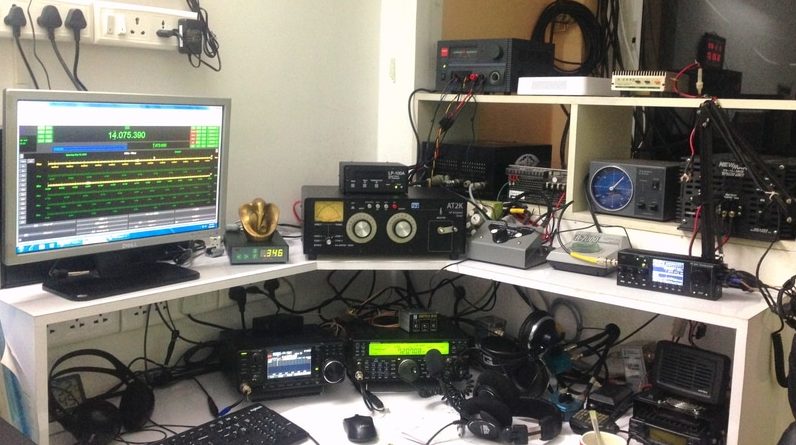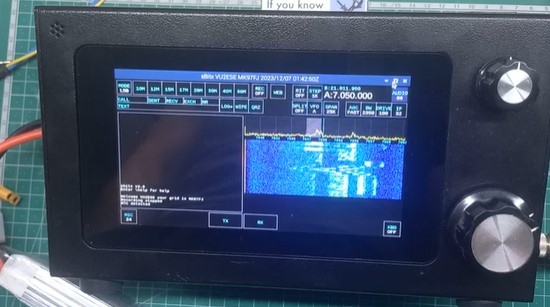“Now that I have my ticket, what’s next?”
If you haven’t done so already, it’s a good idea to pick up a radio receiver and start listening to the airwaves! By listening to different bands, you’ll be getting a good idea about the kinds of signals you can hear at your location.
This is almost always the first question that every beginner in the hobby has. The answer to that questions is simple – Setup your shack and start coming on air!
Before you begin, start off by identifying the space where you plan to set things up. Figure out a place to put up your antenna. Based on your location, you’ll need to find a way to get your antenna as high as possible from the ground and away from any objects as much as possible. You also need to ensure that the antenna and mast arrangement are safe and don’t pose a risk later.
Next, you’re going to need a space where you can route your cable from your antenna, out in the garden or terrace. Power should also be accessible, ideally with an RF ground isolated from mains ground. Try to move away of sources of electrical noise such as transformers, elevator motor rooms, etc as they can interfere with radio signal reception.
Now, it’s time to figure out what equipment you need to buy. Every amateur radio shack is different and is designed upon the needs of the operator. Start off by identifying what you want to do in the hobby. A DX chaser’s shack is very different from a bird(satellite) hunter’s shack.
Most Indian amateur operators start off by buying a VHF/UHF handheld radios which have limited power. This is a good start if there are many VHF/UHF users in your locality or if you are within the range of a repeater. If you live in an area where there aren’t many hams using VHF/UHF, a better option would be to invest in a VHF base station radio with higher power output that can help you reach the nearest repeater.
If there are no nearby repeaters, consider starting off with HF radios. While HF radios are considerably more expensive and need bigger antennas compared to VHF radios, they allow for long range communications. An added bonus is that even low power HF radios can very comfortably make contacts with hams throughout the world.
The next thing to work on would be the antenna. Since a lot of us face problems in putting up an antenna due to various restrictions, the author thoroughly believes in old adage, “Any antenna is better than no antenna.” That said, the antenna is a very crucial part of the shack as it funnels in the signals from the ionosphere into your radio.
As stated earlier, your antenna’s height and proximity to other objects will affect the way it performs. Try to ensure that your antenna is located as high as possible, away from objects such as water tanks, lightning rods, etc. Another practical consideration is to make sure that the antenna and the mast doesn’t pose a safety hazard to anyone.
A few other things that come to mind are accessories. A shack computer is useful logging, spotting and a myriad of activities. An old PC/Laptop can be repurposed for this. Although accessories like VNA’s, antenna analyzers, RF power meters are useful at a later date, they can be borrowed from your friendly neighbourhood ham and aren’t really a must have. A digital multimeter, however, is a must for troubleshooting basic problems. Don’t forget to start collecting tools you’ll need such as high power soldering iron, crimping tools, connectors, adapters, patchcables, pigtails, etc as per your need.
As always, feel free to reach out to us or your nearest radio amateur if you have any questions!
Pictured is the shack of VU2OY, OM Ranjith. Photo courtesy VU2LN, OM Sinosh.


